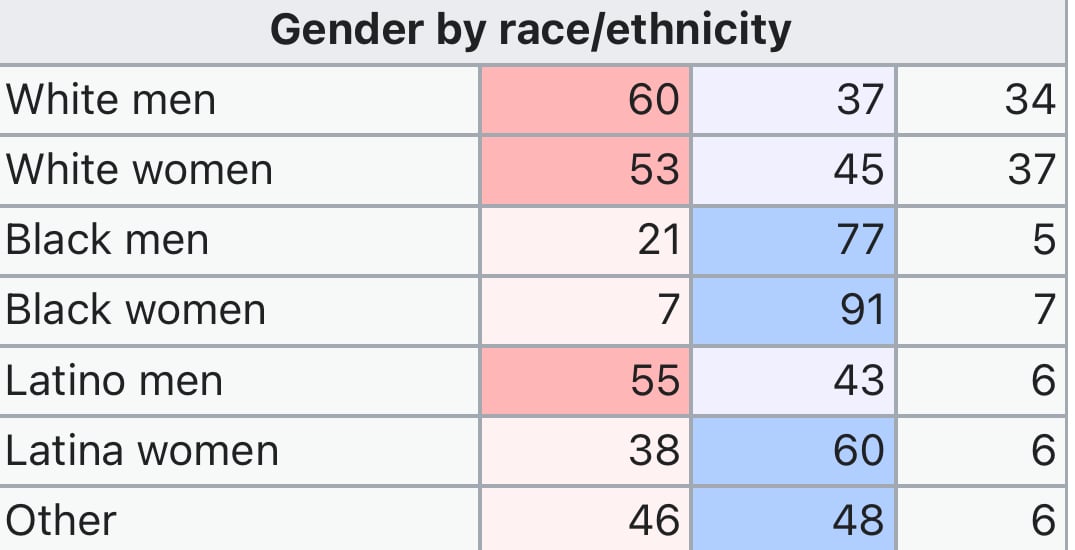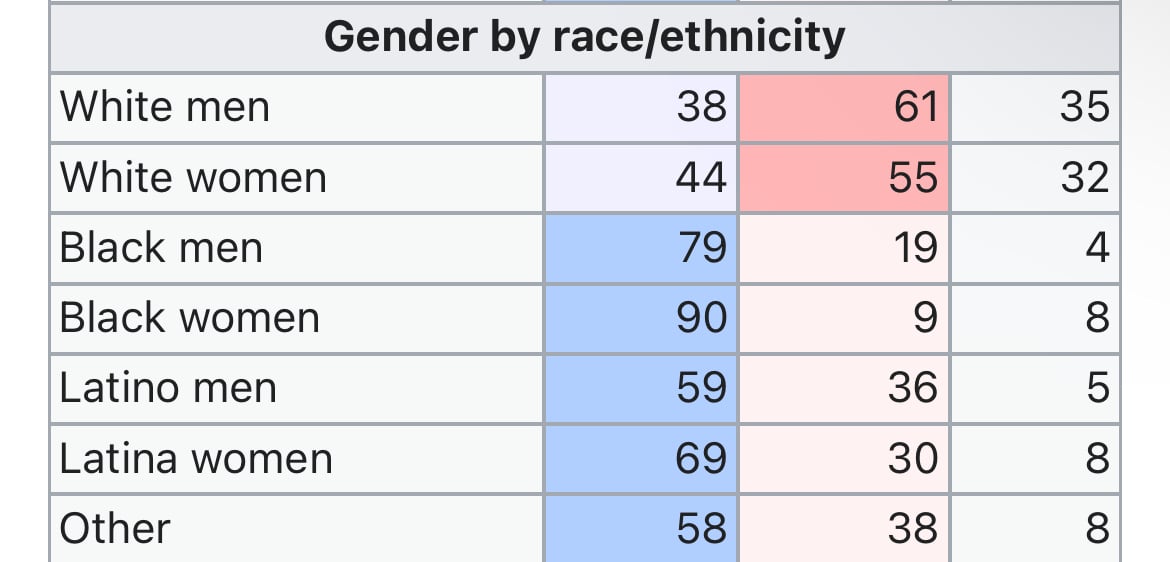Now that we have final numbers. It appears that Harris had all the white & black support she needed for an EC victory. But Trump outright flipping Latino men and making huge gains with Latino women seems to have made all the difference.
What do you think?


First image is 2024, second is 2020.


I think white men and white women bear more of the blame here purely by population size.
Agreed. Despite all the nuances (which are important, too)… Judging by this table, the biggest total blame is on white men, followed by white women and latino men, though there aren’t that many of them. But I feel i need to say this doesn’t have anything to do with ethnicity. You could also make a chart of city vs rural areas or several other factors and you’d probably also find interesting correlations and shifts in opinion.
Latines now make up 20% of the U.S. population, making them the largest minority group. Among the under-18 demographic, that number climbs to nearly 30%. If current population trends hold, Latines are poised to become the largest ethnic group in the country within about 25 years—that’s just three presidential terms away.
While Latines are a minority ethnicity, they are the largest one and the second-fastest growing, trailing only Asians. Asians, despite having one of the lowest birth rates, experience the highest proportional rate of immigration. Notably, Trump gained 12% of the Asian vote in the most recent election, a trend across these growing demographics that, if sustained, could spell significant gains for Republicans in the future.
However, let’s not overlook the broader electoral picture. Black, Asian, and Latine men and women combined make up about 29% of the voting public in presidential elections, while white women alone account for a staggering 37-38%. For context, Latino men represent just 5-6% of voters. White women are, by far, the largest voting demographic.
Interestingly, Trump increased his share of all women by 7% compared to when he ran against Biden and has increased his support from women each time he’s ran. The devastating thing, I think, is that Trump won 13% more of the 18-29-year-olds, 5% more of 30-44-year-olds, and continues to capture “Boomer Lite,” aka Gen X, a majority of whom he has won each time he’s ran, but he increased his share by 9% this time.
Edit: corrected an earlier data error.
Dude where are you getting your data? Trump won white women by 52% in 2016.
If he had lost white women like you posted, he would’ve lost the election.
Hmm. An article quoting Pew: “a majority of white women (53 percent) did vote for Trump in the 2024 presidential election, up from 44 percent in 2020 and 39 percent in 2016 per Pew.”
but I think you’re right, those numbers sound like all women. I’ll edit the post.
With how thin our election margins are, I wonder if literally just misogynists can swing the election. Would 1 in 100 Americans refuse to vote for a woman for president? I think maybe yes.
It’s hard to separate out the factors. Would a man have also struggled with a campaign starting so late (and doing so poorly in a previous primary). Would a white women? How can we separate out the influence of race, sex and the less than ideal running circumstances.
Given who she is, and running when she had to, she actually did pretty damn well.
Tbh looking for blame beyond Biden seems pointless to me. She has every sign of having been able to win over more people had she been prepped as the nominee from the start…
As another White Dude for Harris, I concur entirely. It’s definitely an issue with white dudes.
Who’s talking blame?